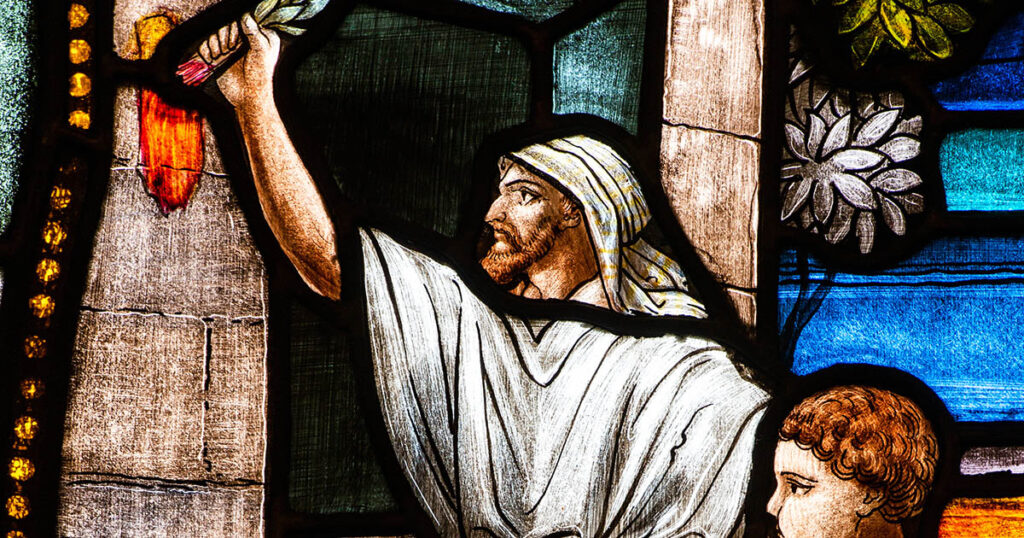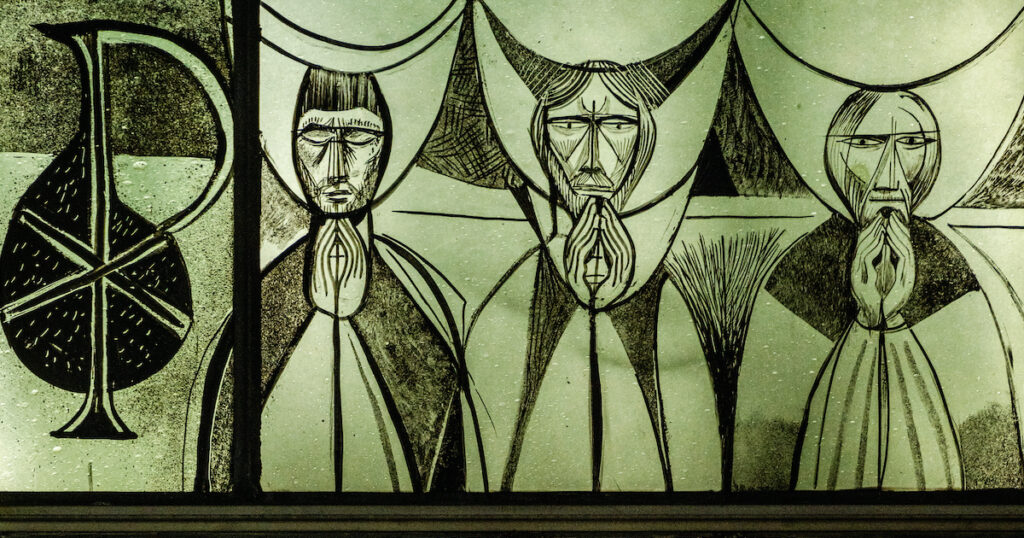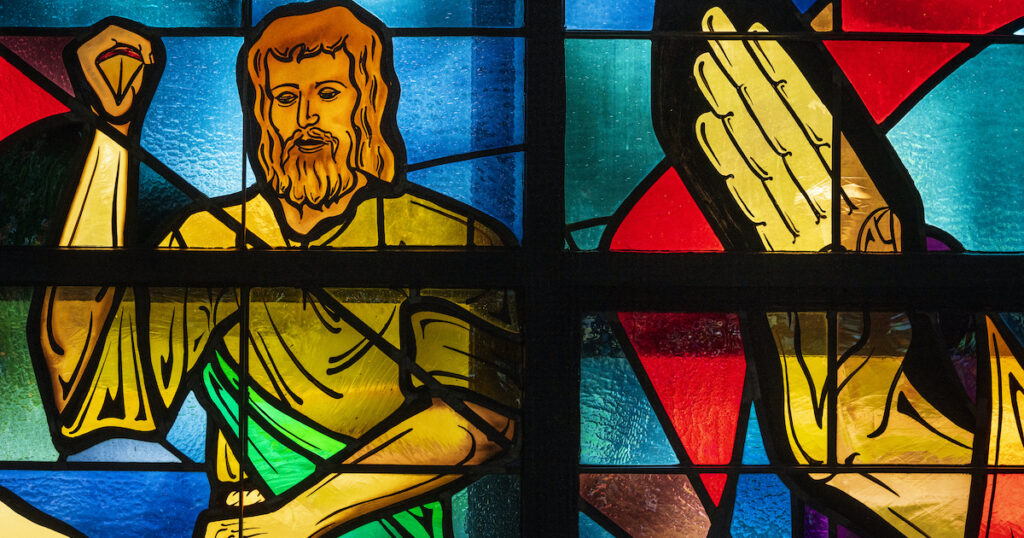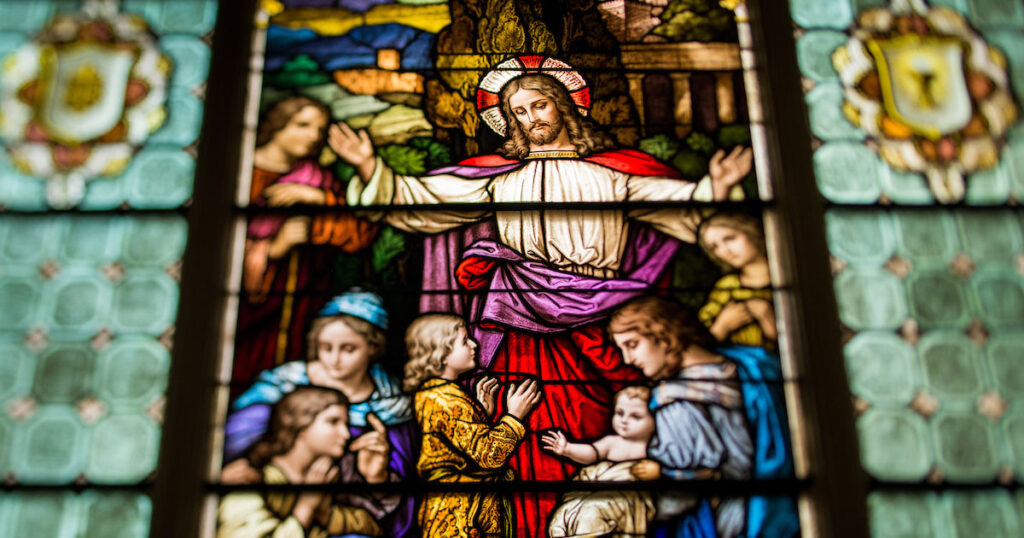The Rev. Dr. Geoff Boyle is taking us through the Old Testament with the Early Church fathers.
“The Lord said to Moses and Aaron in the land of Egypt, 2 “This month shall be for you the beginning of months. It shall be the first month of the year for you. 3 Tell all the congregation of Israel that on the tenth day of this month every man shall take a lamb according to their fathers’ houses, a lamb for a household. 4 And if the household is too small for a lamb, then he and his nearest neighbor shall take according to the number of persons; according to what each can eat you shall make your count for the lamb. 5 Your lamb shall be without blemish, a male a year old. You may take it from the sheep or from the goats, 6 and you shall keep it until the fourteenth day of this month, when the whole assembly of the congregation of Israel shall kill their lambs at twilight.”
Exodus 12:1–6
Certain texts you read at certain times every year. Every Advent, I revisit St. Athanasius’s On the Incarnation. During the twelve days of Christmas, I read one of Charles Dickens’ stories. And during Passiontide, the last two weeks before Easter, I always read Melito of Sardis’ On Pascha. There’s no better homily to prepare for preaching the Passion and Resurrection of our Lord.
Melito of Sardis wrote this homily between A.D. 160–170. He was Bishop of Sardis, one of the cities addressed in St. John’s Revelation (Rev. 3:1). The text reveals that it was a liturgical poem preached during the Paschal celebration—what we might call today the Easter Vigil. His text is Exodus 12, the story of the Passover. I’ve tried to provide enough of the text to demonstrate his typological reading of the Old Testament — that is, the way he sees the events of the exodus as imprints of Christ, literally typed into the historical event as well as the text that bears witness to it — as well as his liturgical and homiletical thrust. Again, I recommend reading it in its entirety (it only takes about half an hour). In the meantime, here are selections from Melito:
“This is the mystery of the Pascha,
just as it is written in the law, which was read a little while ago…O Strange and ineffable mystery!
The slaughter of the sheep was Israel’s salvation,
And the death of the sheep was life for the people,
And the blood averted the angel.Tell me angel, what turned you away?
The slaughter of the sheep or the life of the Lord?
The death of the sheep or the type of the Lord?
The blood of the sheep or the spirit of the Lord?It is clear that you turned away
Seeing the mystery of the Lord in the sheep
and the life of the Lord in the slaughter of the sheep
And the type of the Lord in the death of the sheep.
Therefore you struck not Israel down,
But made Egypt alone childless.What is this strange mystery,
That Egypt is struck down for destruction
And Israel is guarded for salvation?
Listen to the meaning of the mystery.Nothing, beloved, is spoken or made without an analogy and a sketch;
For everything which is made and spoken has its analogy,
What is spoken an analogy, what is made a prototype,
So that whatever is made may be perceived through the prototype
And whatever is spoken clarified by the illustration.This is what occurs in the case of a first draft;
It is not a finished work but exists so that, through the model,
That which is to be can be seen.
Therefore a preliminary sketch is made of what is to be,
From wax or from clay or from wood,
So that what will come about,
Taller in height,
And greater in strength,
And more attractive in shape,
And wealthier in workmanship,
Can be seen through the small and provisional sketch…So then, just as with the provisional examples,
So it is with eternal things;
As it is with things on earth,
So it is with the things in heaven.
For indeed the Lord’s salvation and his truth were prefigured in the people,
And the decrees of the Gospel were proclaimed in advance by the law…
For then the slaughter of the sheep was of value,
Now it is worthless because of the Lord’s life.
The death of the sheep was of value,
Now it is worthless because of the Lord’s salvation.
The blood of the sheep was of value,
Now it is worthless because of the Lord’s spirit.
The dumb lamb was of value,
Now it is worthless because of the Lord’s spirit.
The dumb lamb was of value,
Now it is worthless because of the son without spot.
The temple below was of value,
Now it is worthless because of the heavenly Christ.The Jerusalem below was of value,
Now it is worthless because of the heavenly Jerusalem.
Once the narrow inheritance was of value,
Now it is worthless because of the breadth of grace.
For it is not on one place, nor in a narrow plot, that the glory of God is established,
But on all the ends of the earth.
For his grace has been poured out
And the almighty God has made his dwelling there.
Through Christ our lord,
To whom be the glory for ever and ever. Amen…Thus the mystery of the Lord,
Prefigured from of old through the vision of a type,
Is today fulfilled and has found faith,
Even though people think it something new.
For the mystery of the Lord is both new and old;
Old with respect to the law,
But new with respect to grace.
But if you scrutinize the type through its outcome you will discern him…And look at the sheep, slaughtered in the land of Egypt,
which saved Israel through its blood whilst Egypt was struck down.The Mystery of the Lord is proclaimed through the prophetic voice…
concerning the mystery of the Pascha, who is Christ,
to whom be the glory for ever. Amen.This is the one who comes from heaven onto the earth
For the suffering one,
And wraps himself in the suffering one through a virgin womb,
And comes as a man.
He accepted the suffering of the suffering one,
Through suffering in a body which could suffer,
And set free the flesh from suffering.
Through the spirit which cannot die
He slew the manslayer death.He is the one led like a lamb
And slaughtered as a sheep;
He ransomed us from the worship of the world
As from the land of Egypt,
And he set us free from the slavery of the devil
As from the hand of Pharaoh,
And sealed our souls with his own spirit,
And the members of our body with his blood.This is the one who clad death in shame
And, as Moses did to Pharaoh,
Made the devil grieve.
This is the one who struck down lawlessness
And made injustice childless,
As Moses did to Egypt.
This is the one who delivered us from slavery to freedom,
From darkness into light,
From death into life,
From tyranny into an eternal Kingdom,
And made us a new priesthood,
And a people everlasting for himself.This is the Pascha of our salvation:
This is the one who in many people endured many things.
This is the one who was murdered in Abel,
Tied up in Isaac,
Exiled in Jacob,
Sold in Joseph,
Exposed in Moses,
Slaughtered in the lamb,
Hunted down in David,
Dishonored in the prophets.[1]
Stunning! First, Melito ties together the Old and the New. But what exactly does he mean? He’s not speaking of the Old Testament, per se, but of the old event: the sheep, the meal, the death of the firstborn, Moses and Pharaoh, Israel. These he calls types, analogies, sketches, illustrations, a first draft and model. In contrast to these, Melito sets the work of Christ in terms of mystery and truth. But he doesn’t pull them apart as though one had nothing to do with the other but shows how Christ is the Lamb and that His mystery is found in the sheep. It’s not just that one points to the other, but that it contains the other. He offers a profound presence of Christ hidden from their eyes but received by faith, even among Moses and those who marked their homes with the blood.
Furthermore, Melito does not offer a simple academic exercise, no matter how rhetorically sound it may be. Rather, he takes the event of Old and presents the mystery of the cross in such a way that this event — the Passover (Pascha) — unfolds before their eyes. Those gathered in this paschal celebration are those whose doorframes are marked with blood. For this Christ “is the Pascha of our salvation,” Melito says. His death delivers “us from slavery to freedom, from darkness into light, from death into life, from tyranny into an eternal Kingdom, and made us a new priesthood, and a people everlasting for himself.”
As we read the Passover story with Melito, we find our own participation in the event through the death and resurrection of Jesus. Those of old and we who are new are tied together in this ineffable mystery. The Pascha — Passover — is Christ, “prefigured from of old through the vision of a type, today fulfilled and has found faith.” Thanks be to God!
[1] Melito of Sardis, On Pascha, trans. Alistair Stewart-Sykes (Crestwood: St Vladimir’s Seminary Press, 2001), 40, 45–48, 52–56. Paragraphs 11, 31-36, 39, 44–45, 58, 60–61, 65–69. Purchase the book here.






Dr. Boyle,
So because of Christ-typology in the Testament, “Jerusalem is of no value and worthless”?? HOw could you not comment on this beginning of anti-Judaism in the church as early as the second century. You’re omission leaves you open to endorsing same, which is no surpriese given the German roots of the LCMS and its perpetuation of supercessionism and replacement theology. Your evaluaiton of Melito is sad, discouraging, and misinformed.
Dr. Paul O. Bischoff
This certainly speaks to the soul. So profound. Thank you for sharing this Dr. Boyle. Again I learned of another saint from history Melrose of Sardis I had never heard of before.